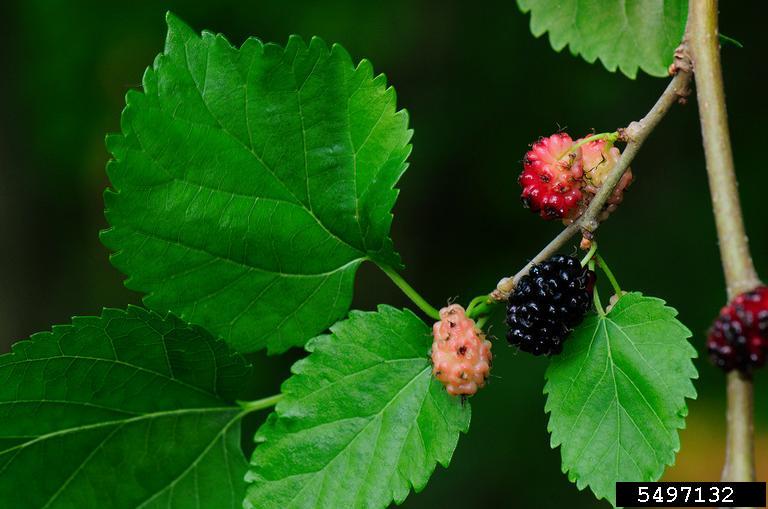
by Larry Williams | Jul 7, 2015
There are a number of plants in my landscape that bring back fond memories – plants that I propagated.
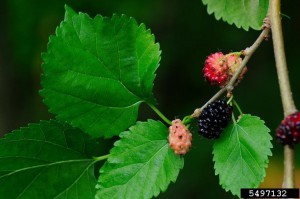
Red Mulberry. Photo credit: Vern Williams, Indiana University, bugwood.org.
There’s a mulberry tree in my backyard that I rooted years ago. I took the cuttings from an old mulberry tree in my hometown. As a boy, I climbed the tree, got in trouble once for coming home with mulberry stains on my clothes. I liked the berries and still do. I have good childhood memories about the tree.
About twenty years ago I visited the property adjacent to my childhood home. The tree was still there. It was during mulberry season. I enjoyed a few mulberries. I took about eight or ten cuttings from the tree. About a year after my visit, the property sold. The new owner bulldozed the tree.
But because of the cuttings that I rooted, the tree still lives and not just in my memory. The trees produced by those cuttings are genetically the same as the parent tree. Essentially, they are clones. The one in my backyard produces mulberries each year.
You too can propagate memories. Not all plants can be propagated from cuttings but many can be. Sometimes trial and error is necessary to learn proper timing in taking cuttings. But most reliable references will provide the time of year to take cuttings based on the plant species.
Stem cuttings should be removed from the parent plant with a clean, sharp knife or pruner. Ideally your cutting should be 4-6 inches in length and not much thicker than a pencil in diameter.
Take the bottom two-thirds of leaves off on each cutting. The cuttings should be stuck upright in a propagation medium. I usually use a good quality potting mix and mix in a little course sand or perlite for better drainage. The cuttings should be inserted deep enough to hold them upright, usually ½ to 1 inch.
To help promote rooting of moderate to difficult to root plants, wound the cuttings by scraping the lower ½ to 1 inch of the stem with a clean, sharp knife. The scrape should remove the bark or “skin.” Then dip the cutting in a rooting hormone covering the scrape with the rooting powder prior to inserting the cutting into the rooting medium.
I usually use a four inch pot, gallon size pot or bedding plant flat with drainage holes as a rooting container. I may stick as many as ten stem cuttings in a gallon size pot. I place the container of cuttings in a shady location outdoors and keep it moist. The cuttings should produce roots in two to sixteen weeks, depending upon plant species and the environment.
After the cuttings have rooted, carefully remove them and individually plant each rooted cutting in its own four inch to one gallon size pot. Keep the potting medium moist but not soggy. After the roots adequately fill the pot, the plant should be strong enough to be planted in the ground.
As your rooted cuttings grow, hopefully they will provide fond memories.
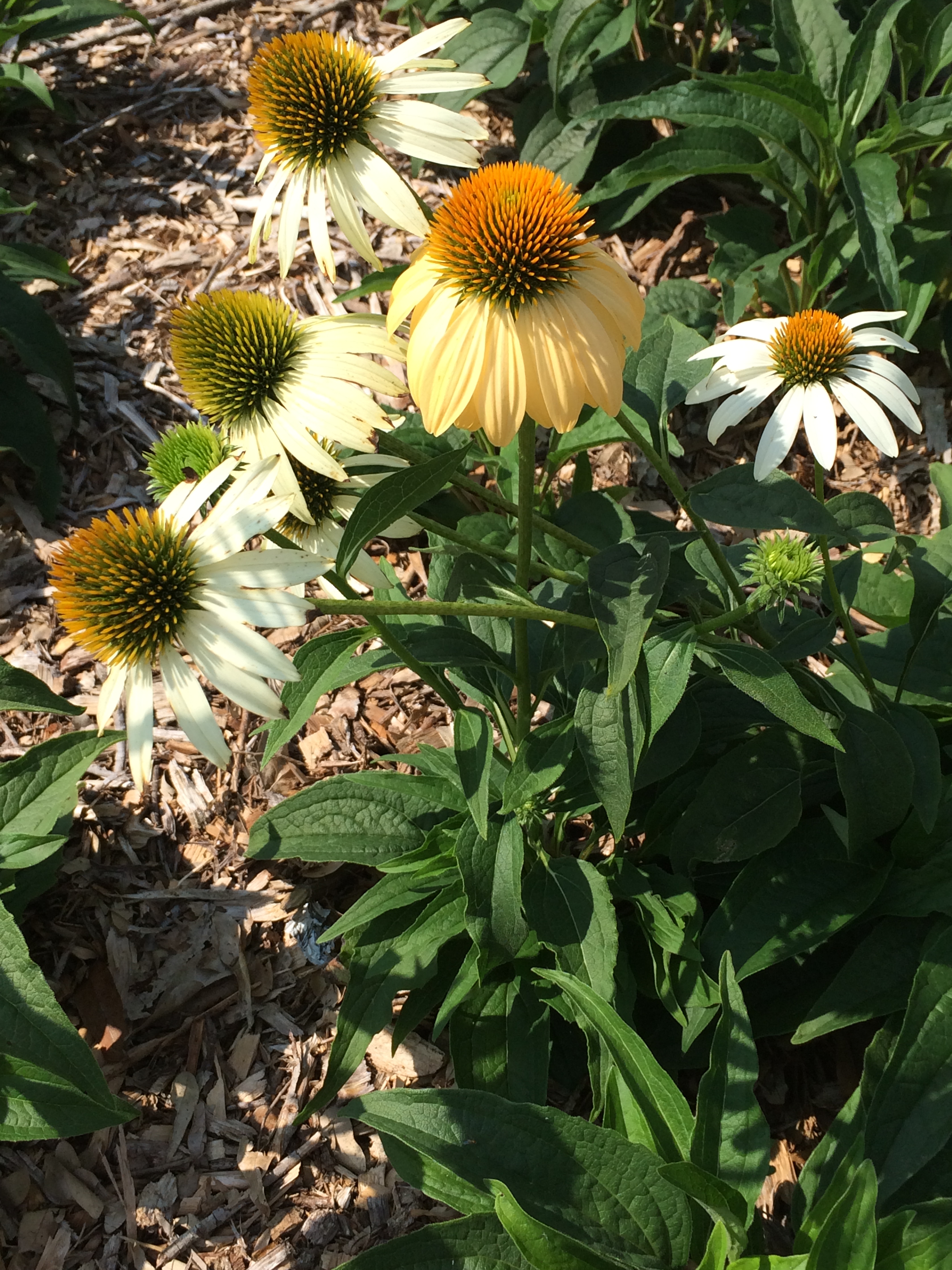
by Mary Salinas | May 12, 2015
An easy to care for perennial to add to your flower garden is the coneflower, Echinacea purpurea. The daisy-like flowers stand tall above the foliage on sturdy 2 to 4 foot stems. Blooms appear about the last part of April or the first of May in the Florida panhandle and last throughout the warm season until late fall. This Florida native reliably comes back year after year. Plant coneflower in part to full sun in rich but well-drained soil for best results.
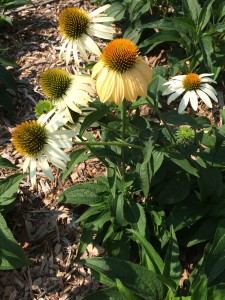
White coneflower. Photo credit: Mary Derrick, UF/IFAS Extension.
Coneflowers are traditionally purple but many new colors and variations of their form have become available from the horticultural industry. You can find them in white, yellows, pinks, oranges, and greens as well as all shades of lavender and purple. No matter what color you choose, the blooms will attract a host of butterflies and other pollinating insects. In order to protect these delicate creatures, avoid the use of pesticides when they are present.
Once you have a few coneflowers, you will notice that the clumps will grow in time and new plants will sprout from seeds left behind by the spent blooms. In our demonstration garden, this has created a stunning display that has been allowed to take over one of the garden beds. When any one clump gets too big, the number of blooms can decrease and it may be time to dig up the clump and divide it. This is a great opportunity to expand your coneflower bed or share them with some friends or neighbors!
For more information:
Ornamentals for your landscape
Butterfly Gardening

by Mary Salinas | Oct 21, 2014
This autumn you may notice shrubs with long, arching branches sporting clusters of shiny purple berries. That beautiful sight is the Beautyberry, or Callicarpa americana. This native is found throughout Florida and the southern United States, west into Texas and north to Tennessee and Virginia.
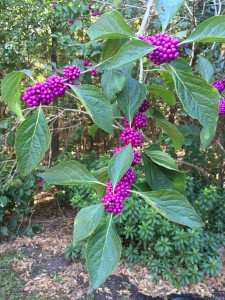
Beautyberry in the fall. Photo credit: Mary Derrick, UF IFAS Extension.
In the spring, lavender flowers adorn the branches and are a favorite of bees. The flowers eventually give way to the shiny purple berries in the fall. Birds find the berries very attractive and will feast on them when found. Mockingbirds and cardinals are especially fond of them. If you plant this shrub for the birds, one or two plants will provide more than enough of the berries to satisfy their appetites.
Beautyberry is adaptable to a wide variety of soils and moisture. After it gets established it is drought tolerant, however it can also do well in a moist area. A spot in your garden that gets partial sun is a perfect location. Plants in too much sun sometimes get a bit yellow and those in too much shade get leggy and don’t set as much fruit. Beautyberry is deciduous, meaning that it will lose all its leaves in the winter. Therefore, you may want to place it in an area of your yard where it won’t be a focal point in the winter.
This lovely plant is usually readily available at independent nurseries. If you prefer to grow your own, beautyberry is easy to propagate and grows rapidly. Snip off an approximate 6-inch piece from the end of a stem; the cut piece should have 5 sets of leaves. Snip off the bottom 2 sets of leaves – this part of the stem will be in the soil and roots will emerge from where the leaves were removed. Also snip off the top of the stem to include the top set of leaves. Your cutting will end up with only 2 sets of leaves. Immediately put the cutting in a good potting soil, making sure that the lower part of the stem where the 2 sets of leaves were removed is below the soil line. Keep the soil moist as the cutting develops a good root system.
You and the birds will enjoy this lovely shrub for years to come!
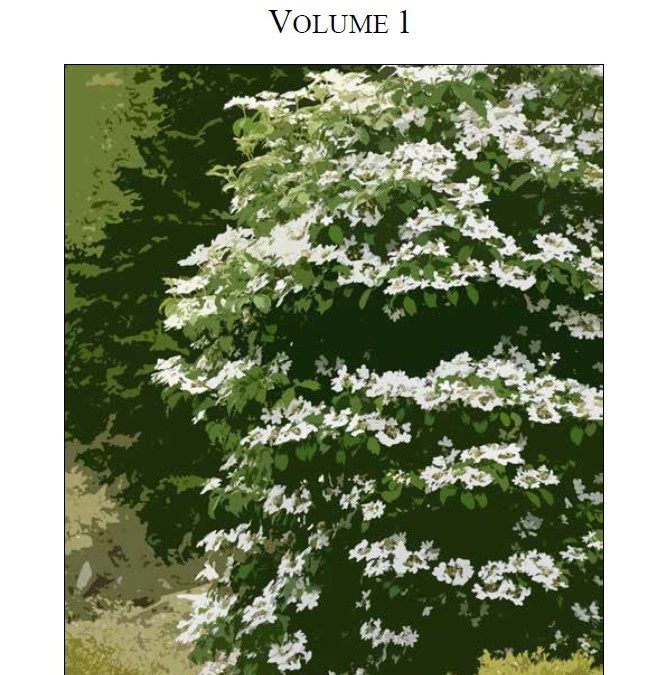
by Gary Knox | Aug 19, 2014
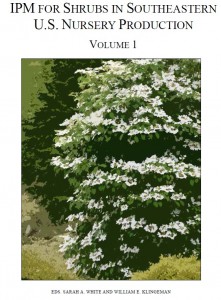 A new IPM guide is making it easier to grow five common southeastern shrubs. Growing five southeastern shrubs is now easier thanks to a free, new IPM resource from the Southern Nursery IPM Working Group.
A new IPM guide is making it easier to grow five common southeastern shrubs. Growing five southeastern shrubs is now easier thanks to a free, new IPM resource from the Southern Nursery IPM Working Group.
IPM for Shrubs in Southeastern U.S. Nursery Production is a compilation of Integrated Pest Management (IPM) information for five major shrubs in nursery crop production in the southeast. This 175 page book covers sustainable management for insects, mites, diseases, and weeds for these shrubs, as well as nursery production information. This IPM resource was developed for nursery growers although professional landscape managers and collectors of these plants also will find the information valuable.
Individual chapters cover abelia (Abelia spp.), camellia (Camellia spp.), shrub rose (Rosa spp.), blueberry (Vaccinium spp.) and viburnum (Viburnum spp.). Each chapter provides comprehensive information on the species, primary cultivars and their nursery production. Major pests, diseases, weeds and abiotic disorders are presented for each genus along with sustainable management methods and tables listing labeled pesticides and fungicides by mode of action and site. An additional chapter discusses weed management in shrub production. Future volumes covering additional shrubs are anticipated.
Edited by Clemson University’s Sarah A. White and University of Tennessee’s William E. Klingeman, this free guide was developed by the Southern Nursery IPM Working Group, including University of Florida NFREC’s Gary Knox and Mathews Paret. The award-winning, multi-disciplinary group is composed of experts from universities across the southeast. This group formed in 2008 to develop and deliver educational programming to the southern U.S. nursery industry and Extension personnel. The team recently won the 2014 Bright Idea Award from the Friends of Southern IPM and Southern IPM Center.
This resource joins the tree IPM book previously released by this group, IPM for Select Deciduous Trees in Southeastern US Nursery Production. The tree IPM book is similar to the new resource in that it contains IPM information for insects, mites, diseases, and weeds of nine major tree crops as well as production information. Individual chapters cover birch (Betula spp.), cherry (Prunus spp.), crapemyrtle (Lagerstroemia spp.), dogwood (Cornus spp.), chinese elm (Ulmus parvifolia), magnolia (Magnolia spp.), maple (Acer spp.), oak (Quercus spp.) and redbud (Cercis spp.).
Both books can be downloaded free through iTunes (http://www.apple.com/itunes/) or each chapter is available as a free pdf through the Southern Nursery IPM Working Group website, http://wiki.bugwood.org/SNIPM. A limited number of hardcopy books were printed and distributed to authors. Thanks to the Southern Region IPM Center for their generous support to make this resource possible!








